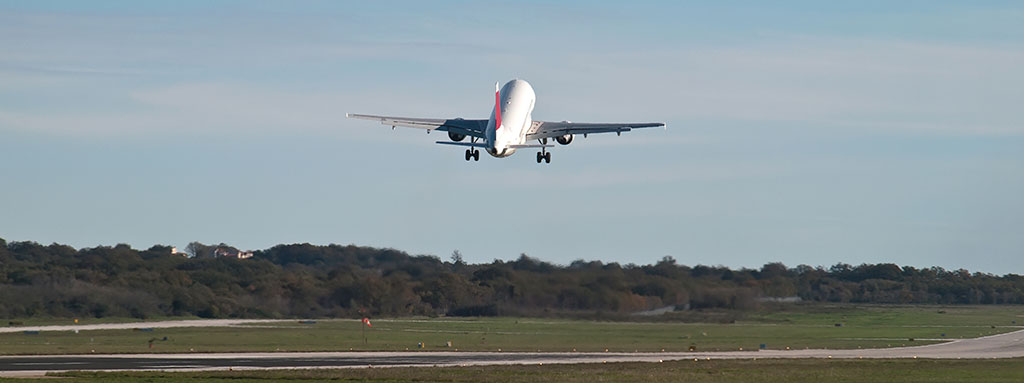Christmas is here and, like in any other holiday period, who isn’t going to travel?
Many people will choose to travel by plane. It is the quickest and most reliable means of transport for medium and long-haul journeys. However, it is advisable prepare and take into account a series of things before boarding an aeroplane. These are small tricks and recommendations that will come in handy when setting off on a flight.
Above all, the main thing is to be aware that flying inside a cabin at an altitude of 30,000 feet above the ground can cause anxiety and insecurity in some people. Concerning this point, one has to be aware that it is the safest means of transport we currently have. Aircraft maintenance and review standards, as well as the cabin crew’s training and experience involve some of the most stringent procedures of any means of transport.
It is precisely the lack of information about the aviation world – and particularly the preliminary steps taken for an aeroplane to initiate the flight – which partially causes these fears. The first piece of advice is therefore to get to know these details, which will help you set off on your trip in a more confident frame of mind. For extreme cases, however, there also some companies which specialise in treating the fear of flying with a proven success rate.
Now, moving on to the crux of the matter, some of the recommendations for having a comfortable flight include the following:
- An aeroplane cabin’s relative humidity is approximately 20%, which is very low when compared to the figure of between 40% to 70% in a normal building. This is why it is advisable to drink liquids (except tea or coffee) to keep hydrated.
- According to statistics, most passengers remain seated during the entire trip. It is therefore important to wear comfortable, loose-fitting clothing which allows for freedom of movement in a reduced space.
- In this regard, you should make an effort to keep moving during the flight, either doing short exercises in the seat by moving the feet, legs, back and neck, or taking a stroll along the cabin every two hours on long trips.
- Although cabins are pressurised, the change in atmospheric pressure directly affects the Eustachian tube, causing blockages and a great deal of discomfort. This effect can be counteracted by chewing gum, sucking on a sweet or opening the mouth several times (yawning).
- Aeroplanes may be shaken or be subject to brusque movements when passing through areas of turbulence. The wind through which are moving is nothing more than the laminar circulation of the particles in the air. Turbulence comes about when this movement is disorderly and perturbations are formed in the form of vortexes when going through an area of clouds, and because of very strong winds or a sudden or very sudden change in wind speed and intensity known as wind shear. This is why it is always advisable to keep the seatbelt fastened during the flight and not to move from your seat. If turbulence worries you, the best thing to do is to look for a seat near the aeroplane’s wings, it being the most stable place.
- A copy of all the documents should be made before the trip just in case the original documents get lost or are stolen. In any event, you can obtain a provisional official copy on the spot should you lose them by submitting an ID document at some airports or at the embassy.
- Only carry one cabin-sized suitcase: Regardless of the flight’s length or where you are going, hand luggage avoids very long check-in queues and a loss of time. To make sure everything fits into the hand luggage, you first have to make a list of everything you want to bring along. Be practical and choose clothing that can be matched easily. Second, place all your things so you can see them and, once this is done, you can start sorting out the puzzle. Take advantage of all the corners and spaces. Leave shoes, liquids and electronic devices to the end. Always remember to wear the most voluminous clothing.
- Bring along less than what you will need during the trip. You will bring more things or less depending on whether it is a business or leisure trip. However, we always tend to buy something on trips and we have to bring it back home. This is why it is useful to have a space reserved in the suitcase for any possible purchases.
- Place shirts or silk clothing in dry cleaning bags. If you have to bring along shirts or clothing which wrinkle easily, place them in a dry cleaning bag, hang them in the shower, turn on the hot water tap and the steam will iron out the clothes.
- Weigh and measure the dimensions of your suitcase before going to airport. Each airline has its own rules. Though you think your suitcase is tiny, you may exceed the limits and they may make you check it in. Apart from the additional cost, you will waste time dropping off and reclaiming the suitcase at airports.
- Choose a direct flight without stopovers to avoid wasting unnecessary time and possible delays in the next flight.
- Dealing with jet lag. On long journeys involving changes of time zones, a simple trick is to think about the time of the destination you are flying to and act in accordance with it to lessen the impact.
These recommendations will surely make your trip a little bit more pleasant for all intents and purposes.
Going back to the very beginning of this post, air safety is the first premise which is taken into account in this industry and any decision or action is subordinated to it. An extensive team of technicians, engineers, pilots, crew and technical ground staff thoroughly monitor all kinds of procedures and preventive measures to make sure an aeroplane is ready to fly and positions itself at the end of the runway.
Lastly, each aeroplane goes through several general checks with different levels of thoroughness: a daily check before the first flight of the day, a check after operating for a 100 hours, another one after every 600 hours, then checks every 18 months and finally the so-called the “Intermediate Layover” or “Heavy Maintenance Visit” every five years or their equivalent (30,000 flight hours), in which the aeroplane is disassembled and then reassembled. Each part is then checked, however small it may be.
If you still have any doubts, the knowledge, experience and amiability of the pilots and cabin crew are the best way to resolve any concerns you may still have before or during the flight.
Have a good trip.



